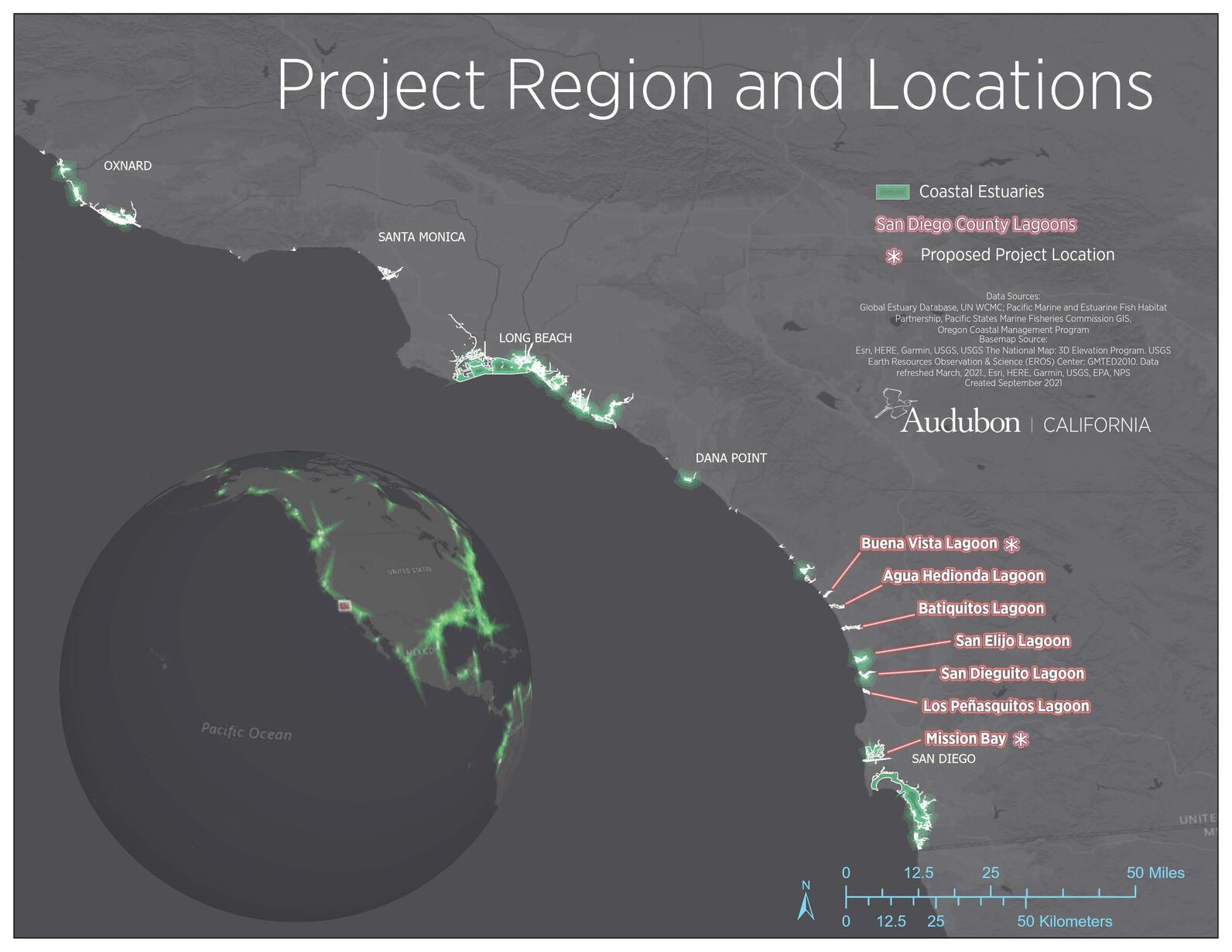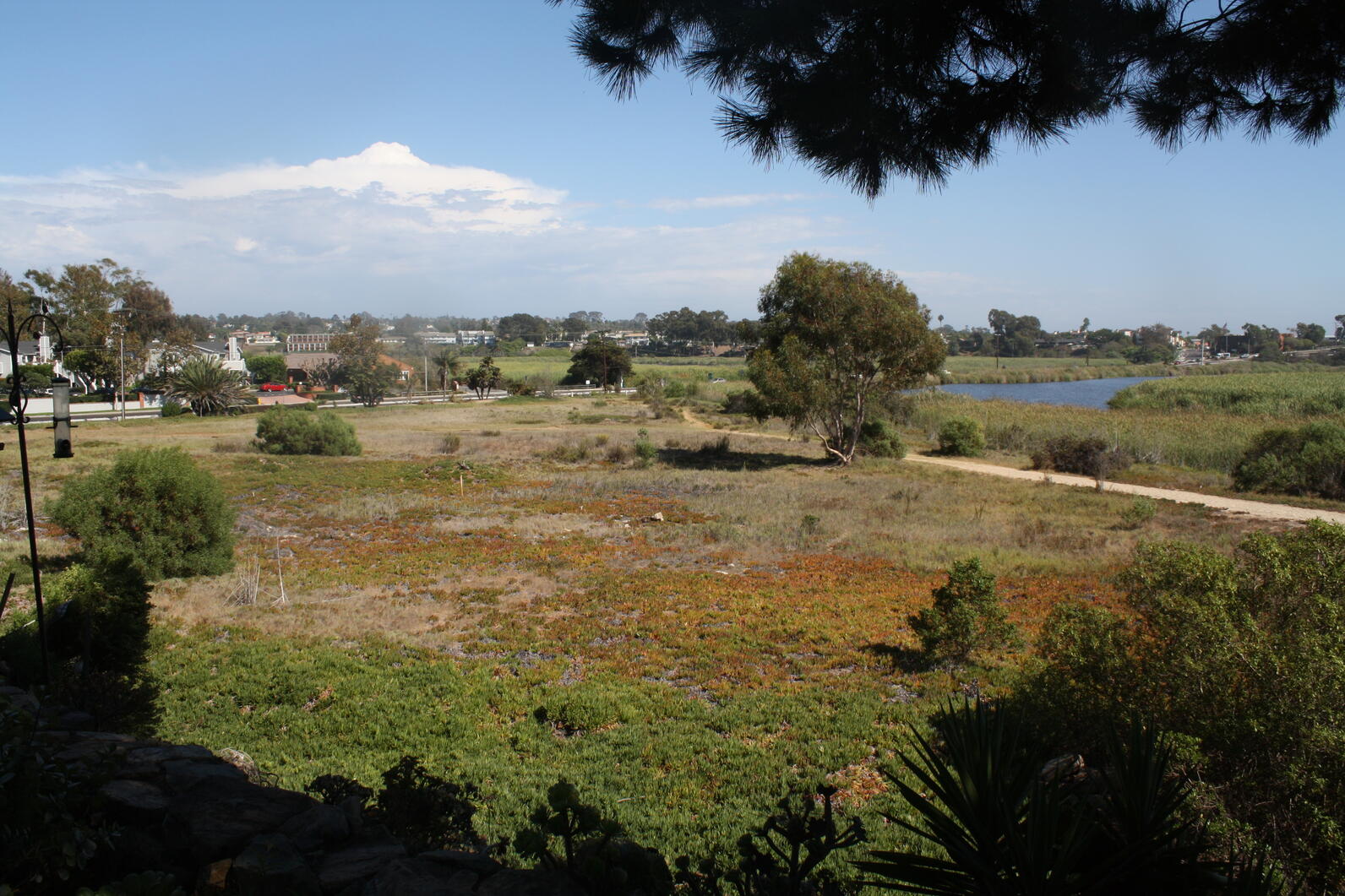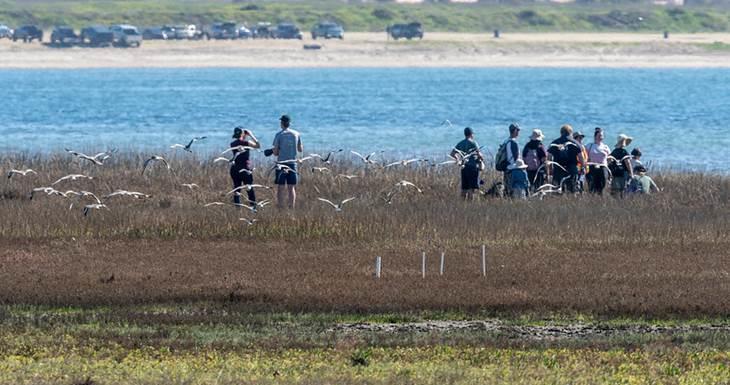(San Diego, Jan. 20, 2022)—Audubon California, together with the Buena Vista and San Diego Audubon Societies, today announced a $500,000 grant from the Dorrance Family Foundation towards the restoration of San Diego’s Mission Bay Estuary and rare habitat adjacent to the Buena Vista Lagoon in North San Diego County. The effort will also enlist the help of members of Indigenous and surrounding communities, to build support for and awareness of the restoration of both of these lagoons.

Both waterways contain various threatened habitats—Mission Bay's includes dunes, eel grass beds vital to spawning fish, mud flats and salt marshes,—while Buena Vista Lagoon is slowly filling up with cattails and sediment. The lagoons are part of a network of wetlands along the coast of San Diego County that is vitally important to waterfowl and shorebirds migrating along the Pacific Flyway. The wetlands also sequester carbon, mitigate runoff pollutants and provide a buffer to local communities against coastal erosion, sea-level rise and storm surges.
The grant will enable Audubon to train and work with dozens of high school and college students from surrounding and Indigenous communities, as well as to work with community leaders to mount educational field trips and to direct advocacy and hands-on restoration. Restoration work will focus on the Wetlands Reserve, which lies adjacent to the Buena Vista Lagoon, and the mouth of the San Diego River and the Kendall-Frost Marsh Reserve in Mission Bay.

The Buena Vista Audubon Society will begin restoration of its 3.5-acre Wetlands Reserve early this year to transform it into critical wildlife habitat. A portion of the San Diego Audubon's Mission Bay restoration project will be highlighted for members of the public and news media at Love Your Wetlands Day on February 5, 2022 at Kendall-Frost Marsh.

“There is a great potential for restoration in Mission Bay—not only for our tidal wetland habitats that are critical habitats for birds but also for our human communities including our Kumeyaay neighbors,” said Andrew Meyer, director of conservation at San Diego Audubon Society. “This support will help us protect tidal wetland habitats and celebrate their value and potential for restoration in San Diego.”
"This grant allows us to restore one of the last pieces of undeveloped habitat by the Buena Vista Lagoon," said Natalie Shapiro, executive director of Buena Vista Audubon Society. "Community involvement in this project, including members of the Payómkawichum Nation and local Oceanside residents, will help craft a restoration project that enhances both wildlife habitat and the community's connection to nature in this very urbanized part of North County."
“We’re especially excited that this grant will enable us to heavily involve community members, including from the Kumeyaay and Payómkawichum peoples whose ancestors have cared for these coastal spots for centuries,” said Andrea Jones, director of bird conservation for Audubon California. “Our work will help improve these beautiful lagoons as habitat and foraging spots for coastal birds and protect coastal communities from the effects of climate change. But just as importantly, we’re introducing community members to them and giving them a stake in these natural gems in their own back yards.”
About 76 percent of low-income communities of color live in areas without access to outdoor recreation activities, according to recent research.
The California coast is a lynchpin of the Pacific Flyway, the migratory route traveled by at least a billion birds every year. With many of their historic stopping points lost, sea- and shorebird populations are declining—some by as much as 80 percent. At least 144 bird species and 56 plant species call San Diego Mission Bay and Buena Vista Lagoon home, including threatened and endangered species such as the Western Snowy Plover, Ridgway’s Rail, Belding’s Savannah Sparrow, and California Least Tern.
###
MEDIA CONTACTS:
Buena Vista Audubon: Natalie Shapiro, (406) 241-2153; buenavistanature@gmail.com
San Diego Audubon: Andrew Meyer, 858-273-7800 ext. 1; meyer@sandiegoaudubon.org
About Audubon
The National Audubon Society protects birds and the places they need, today and tomorrow. Audubon works throughout the Americas using science, advocacy, education, and on-the-ground conservation. State programs, nature centers, chapters, and partners give Audubon an unparalleled wingspan that reaches millions of people each year to inform, inspire, and unite diverse communities in conservation action. A nonprofit conservation organization since 1905, Audubon believes in a world in which people and wildlife thrive. Learn more at www.audubon.organd on Facebook, Twitter and Instagram @audubonsociety.






